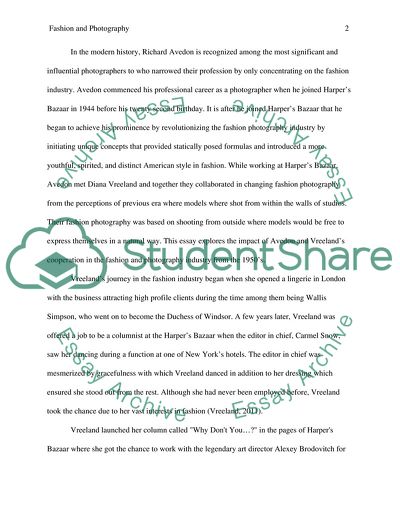Cite this document
(The Impact of Avedon and Vreelands Cooperation in the Fashion and Pho Essay, n.d.)
The Impact of Avedon and Vreelands Cooperation in the Fashion and Pho Essay. https://studentshare.org/visual-arts-film-studies/1808141-how-fashion-and-photography-inform-each-other
The Impact of Avedon and Vreelands Cooperation in the Fashion and Pho Essay. https://studentshare.org/visual-arts-film-studies/1808141-how-fashion-and-photography-inform-each-other
(The Impact of Avedon and Vreelands Cooperation in the Fashion and Pho Essay)
The Impact of Avedon and Vreelands Cooperation in the Fashion and Pho Essay. https://studentshare.org/visual-arts-film-studies/1808141-how-fashion-and-photography-inform-each-other.
The Impact of Avedon and Vreelands Cooperation in the Fashion and Pho Essay. https://studentshare.org/visual-arts-film-studies/1808141-how-fashion-and-photography-inform-each-other.
“The Impact of Avedon and Vreelands Cooperation in the Fashion and Pho Essay”. https://studentshare.org/visual-arts-film-studies/1808141-how-fashion-and-photography-inform-each-other.


